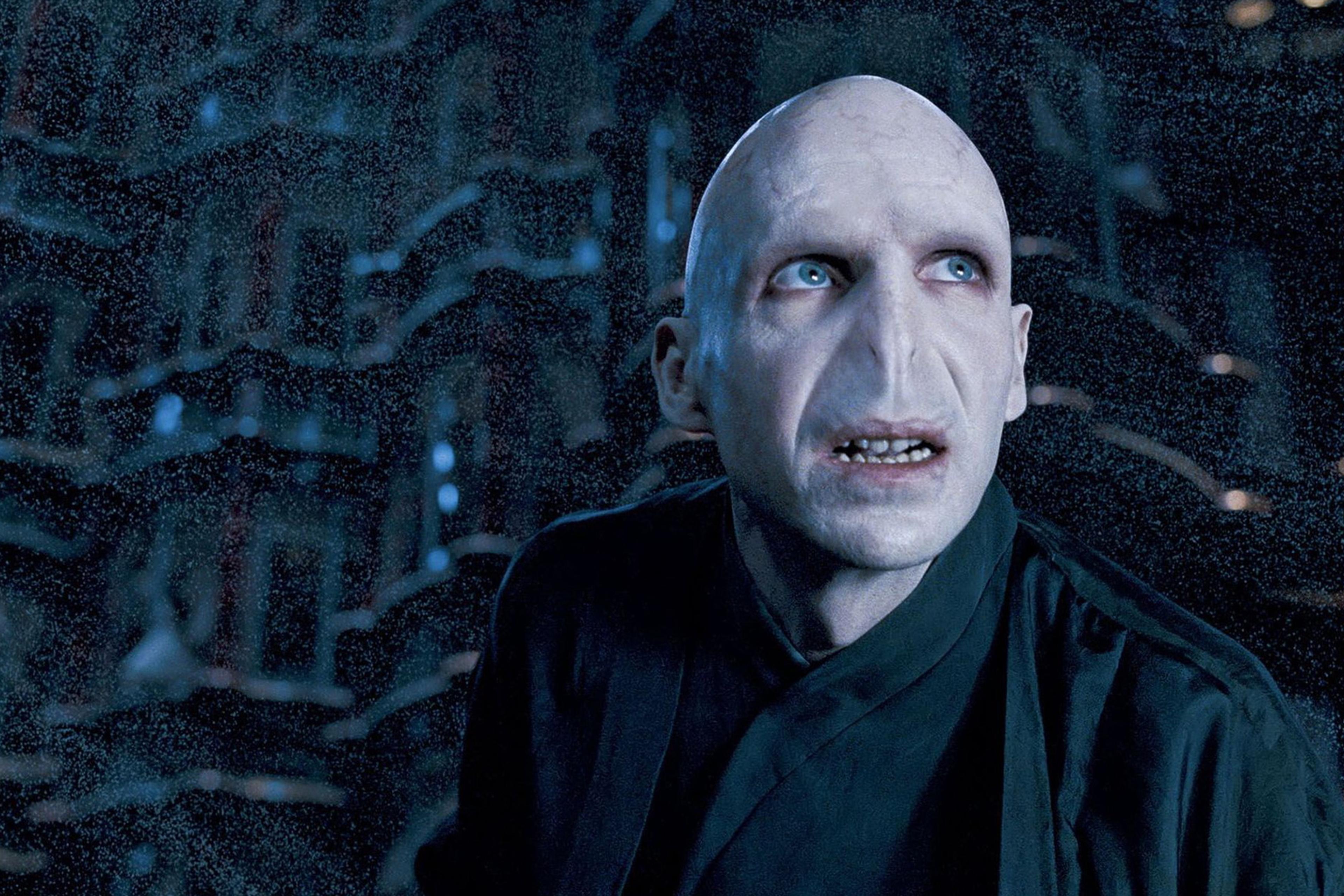Invisibility – the power not to be seen – has captured the fascination and fantasies of people for literally thousands of years. In the earliest imaginings, invisibility was a power bestowed by the gods. In the 1st or 2nd century CE, for example, a Greek author now known as Pseudo-Apollodorus wrote about Perseus’ quest to kill the gorgon Medusa, aided by the Cap of Hades: ‘Wearing it, he saw whom he pleased, but was not seen by others.’ With the aid of the cap, Perseus was able to claim the head of Medusa and escape unseen from her sisters Stheno and Euryale. Stories of invisibility have been told ever since. One of the most recent tales is the movie The Invisible Man (2020), a reimagining of H G Wells’s classic novel. In this film version, a man uses invisibility technology to stalk and control his ex-girlfriend.
Invisibility, then, is sometimes seen as a blessing, sometimes as a curse. Until recently, it remained a complete fantasy. In 2006, the scientific journal Nature published a pair of papers by researchers from the University of St Andrews, Duke University and Imperial College London that demonstrated, theoretically, how to make an invisibility cloak – an object that guides light around a central region and leaves that region undetected. Since then, physicists have been captivated by the possibility of invisibility, proposing a variety of theoretical and experimental techniques for making something hard to see. Though there has not been anything created yet that could be described as ‘invisible’ in the colloquial sense (and there may never be), the attention that physicists have given invisibility shows how deeply intriguing the concept can be.
What is it about invisibility that is so timeless and compelling to the human imagination? We can turn to one of the earliest fables about invisibility to partly answer this question. In the Republic, Plato’s grand philosophical work, a character named Glaucon has a conversation with Socrates in which he shares a story about a powerful ring. In this story, the shepherd Gyges finds a rift in the ground. In the ruins that lie beneath it, he discovers a corpse wearing a gold ring, which he takes to wear for himself. The story continues:
Now the shepherds met together, according to custom, that they might send their monthly report about the flocks to the king; into their assembly he came having the ring on his finger, and as he was sitting among them he chanced to turn the collet of the ring inside his hand, when instantly he became invisible to the rest of the company and they began to speak of him as if he were no longer present.
Discovering that he has acquired the power of invisibility, Gyges immediately conspires to be sent to the royal court and, using his power, he seduces the queen, slays the king and steals the kingdom.
The story of Gyges is introduced in the Republic to ask whether virtue exists only due to the fear of being punished. Socrates argues that a man who succumbs to the temptation for ultimate power will have, effectively, punished himself, by becoming enslaved to his own base desires. Whether one finds this argument convincing or not, it shows one reason that invisibility as a concept is so compelling: it represents power itself.
Many of the more recent stories of invisibility continue this theme. J R R Tolkien’s The Lord of the Rings trilogy (1954-55) also features a ring of invisibility that inevitably corrupts its wielder, which is strikingly similar to the ring of Gyges. Wells’s novel The Invisible Man (1897) features the scientist Griffin, who permanently imbues himself with the power of invisibility but soon realises that being perpetually invisible carries significant disadvantages. Griffin, his madness growing as he struggles with his condition, seeks to establish himself as an invisible dictator, as he describes to a colleague:
The point is, they know there is an Invisible Man – as well as we know there is an Invisible Man. And that Invisible Man, Kemp, must now establish a Reign of Terror. Yes; no doubt it’s startling. But I mean it. A Reign of Terror. He must take some town like your Burdock and terrify and dominate it. He must issue his orders. He can do that in a thousand ways – scraps of paper thrust under doors would suffice. And all who disobey his orders he must kill, and kill all who would defend them.
Other tales showing the danger of invisibility abound. In the story ‘The Invisible Death’ (1930) by Victor Rousseau, an Invisible Emperor seeks to conquer the United States with an invisible army.
Throughout many tales of invisibility, then, invisibility represents the ability to act with impunity. But many authors, such as Wells, also hastened to show that invisibility has a downside. In Edward Page Mitchell’s story ‘The Crystal Man’ (1881), a lab assistant is accidentally made invisible, and the love of his life spurns and mocks him, leading him to take his own life. Stories of invisibility regularly teach the reader, and reassure them, that power can come at a heavy cost to its wielder.
Of course, some invisible beings – such as the Invisible Woman in Marvel’s Fantastic Four – use their power for good. A more obscure example is ‘The Invisible Robinhood’ (1939) by Eando (the brothers Earl and Otto) Binder. After its protagonist, a scientist, discovers the secret of invisibility in a laboratory accident, he opts to use his power to strike fear into the hearts of criminals. Good and bad invisibility collide in the sequel ‘Land of the Shadow Dragons’ (1941), in which he fights against an invisible dinosaur. Yet the Invisible Robinhood’s lab accident also leaves him horrifically scarred – another reminder that power comes at a cost, even when it’s used for heroic acts.
For many of us, the allure of invisibility may be rooted partly in more mundane human inclinations. In The Experience of Landscape (1975), the British geographer Jay Appleton laid out what is known as ‘prospect-refuge theory’. A key idea is that, to avoid and prepare for enemies in the wild, humans have benefited from being able to spot potential threats (prospect) while also being protected from those threats (refuge). Appleton used this idea to explain why humans find certain landscapes appealing. But we can also see how invisibility would represent the ultimate combination of prospect and refuge. The earlier work King Solomon’s Ring (1949) by the Austrian zoologist Konrad Lorenz conveys this clearly, without considering actual invisibility: ‘we reconnoiter, seeking, before we leave our cover, to gain from it the advantage which it can offer alike to hunter and hunted – namely to see without being seen.’
Invisibility is compelling for other reasons beyond its uses and abuses by humans. It also symbolises the unknown: the things that we cannot see or even imagine. Science fiction and horror abound with stories of invisible monsters. The very first tale to attempt to explain invisibility scientifically was Fitz James O’Brien’s ‘What Was It?’ (1859). In the story, two men spend the night in an allegedly haunted house and are attacked by an invisible humanoid. They manage to restrain the creature, and even speculate on the optical science that would make such a being possible. But they are never able to figure out where the creature came from, what it is, or what it wants, and it dies in their care.
Some of the invisible monsters imagined in fiction are much more dangerous. Ambrose Bierce’s tale ‘The Damned Thing’ (1893) begins with an inquest into the mysterious death of the hunter Hugh Morgan. By the end of the narrative, Hugh’s journal reveals that he had been stalked by a creature of an unnatural colour:
The human eye is an imperfect instrument; its range is but a few octaves of the real ‘chromatic scale’. I am not mad; there are colours that we cannot see.
And, God help me! the Damned Thing is of such a colour!
The American horror author H P Lovecraft certainly understood the powerful symbolism of invisibility. He wrote several invisibility stories himself, including ‘The Dunwich Horror’ (1929), in which a town is terrorised by a gargantuan but invisible being from beyond our reality. Lovecraft also emphasised the power of the unknown in the human psyche, once writing: ‘The oldest and strongest emotion of mankind is fear, and the oldest and strongest kind of fear is fear of the unknown.’ Invisible monsters are the ultimate embodiment of an unknown threat.
The history of thinking about invisibility suggests that, if it were to become possible in real life, we would have many reasons for worry – about the unsettling threat of the unknown, about the risk of unseen criminals. But perhaps invisibility could be employed for benevolent purposes, too.
For one scientist, the idea of a technology for invisibility started as more of a joke than a serious proposal. In 2017, John Pendry, one of the pioneers of invisibility research, recalled:
At that time, I was working on the theory of transformation optics, a very powerful design tool in electromagnetics that I had developed, and thought it would be a good joke to show how to make objects invisible to electromagnetic radiation.
The joke was taken quite seriously, however, and not only for its potentially sinister applications. If it is possible to design a cloaking device that can guide light waves around a hidden object, it may be possible to design a device that could be implanted in the ground to guide earthquake waves around a structure. There have been several theoretical studies, and crude experimental tests, to show that ideas about invisibility could be used to produce earthquake-protection technology. And invisibility itself has been considered for beneficial purposes. Some researchers have suggested that the technology could be used to make buildings or unsightly towers less visibly obtrusive in a landscape. In 2003, Susumu Tachi and colleagues at the University of Tokyo introduced ‘retro-reflective projection technology’, which could make a person in a specially designed coat appear almost completely transparent. Tachi suggested that such technology could be used, for example, to make the floor of an aircraft cockpit transparent, to give the pilot greater visibility.
These ideas, and the technology needed to accomplish them, seem far-fetched and may turn out to be impossible in the end. But that, perhaps, is a major reason why invisibility is so compelling to scientists: achieving invisibility means achieving the impossible.
For scientists and non-scientists alike, the various depictions of invisibility in literature and popular culture suggest that the concept serves, ironically enough, as a mirror in which we see ourselves. The extent to which ordinary people like to imagine the uses of invisibility by rogues, monsters and superheroes may tell us something about how deeply concerned we are with our own potential to use – and misuse – the powers at our disposal.








